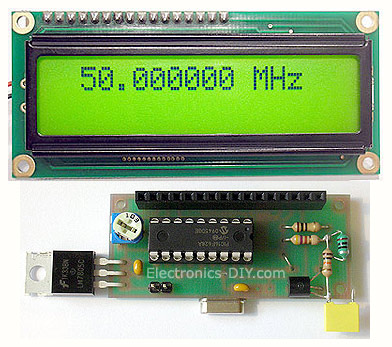Circuit-Zone.com - Electronic Projects
Posted on Saturday, October 9, 2010 • Category: Phone Circuits

An interesting circuit for a me- dium performance handy electronic telephone receiver, suited for receiving incoming calls, is described here. This circuit can be connected to almost all types of telephone exchange lines. To simplify the gadget, the dialler section has been omitted. The circuit can be constructed on a medium size veroboard. Wiring and components layout are not very critical. For compactness, enclose the wired circuit in a plastic cabinet as shown in Fig.(a) here. In order to prevent undesired acoustic feedback, it is necessary to adjust the orientation of ear-piece (LS) and mouth-piece (MIC) at the final stage of construction. The circuit consists of four sections: ringer, voltage regulator, transmitter and receiver. The ringer section is built around capacitor C1, resistor R1 and electronic buzzer BZ1.
Posted on Saturday, October 9, 2010 • Category: AC / DC Innveters
 This is a DC to DC converter for car power amplifier. 12V input generates +30V and -30V output for preamp or power amplifiers. Circuit uses SG3525 IC, Mosfets and switching power supply.
Posted on Saturday, October 9, 2010 • Category: Antennas
 If you have a shortwave or high-frequency receiver or scanner that is struggling to capture signals with a short, whip antenna, and you'd like the kind of performance that a 60-foot 'longwire' antenna can provide but lack the space to put one up, consider building the AA-7 HF/VHF/UHF Active Antenna described in this article. The AA-7 is a relatively simple antenna that is designed to amplify signals from 3 to 3000 MegaHertz, including three recognized ranges: 3-30Mhz high-frequency (HF) signals; 3-300Mhz very-high frequency (VHF) signals; 300-3000MHz ultra-high (UHF) frequency signals. Those bands are typically occupied by shortwave, ham, government, and commercial radio signals.
Posted on Saturday, October 9, 2010 • Category: Antennas
 An antenna with an integrated RF pre - amplifier
Posted on Friday, October 8, 2010 • Category: Test and Measurement
 This is 60MHz Frequency Meter / Counter for measuring frequency from 10Hz to 60MHz with 10Hz resolution. It is a very useful bench test equipment for testing and finding out the frequency of various devices with unknown frequency such as oscillators, radio receivers, transmitters, function generators, crystals, etc. The meter provides very stable readings and has excellent input sensitivity thanks to onboard amplifier and TTL converter, so it can even measure weak signals from crystal oscillators. With the addition of prescaller it is possible to measure the frequency of 1GHz and above. The meter measuring range has been extended and it can now measure 60MHz instead of 50MHz.
Posted on Thursday, October 7, 2010 • Category: AC / DC Innveters
 This circuit will provide a very stable "Square Wave" Output Voltage. Frequency of operation is determined by a pot and is normally set to 60 Hz. Various "off the shelf" transformers can be used. Or Custom wind your own FOR BEST RESULTS. Additional MosFets can be paralleled for higher power. It is recommended to Have a "Fuse" in the Power Line and to always have a "Load connected", while power is being applied. The Fuse should be rated at 32 volts and should be approximately 10 Amps per 100 watts of output. The Power leads must be heavy enough wire to handle this High Current Draw!
Posted on Thursday, October 7, 2010 • Category: FM Transmitters
Posted on Thursday, October 7, 2010 • Category: FM Transmitters
Simple oscillator that generates a frequency in the VHF or UHF region. The oscillator is modulated with the video signal and the modulated carrier wave thus generated is fed into the TV set's aerial input via a cable. Then all that remains to do is tune the TV to the correct frequency.
Posted on Thursday, October 7, 2010 • Category: Antennas
Posted on Thursday, October 7, 2010 • Category: FM Transmitters
This handy prescaler divides input frequency by 1000. It takes maximum input frequency of 3.5GHz and converts it into 3.5MHz that may be measured using standard frequency meter.
Circuit-Zone.com © 2007-2026. All Rights Reserved.
|